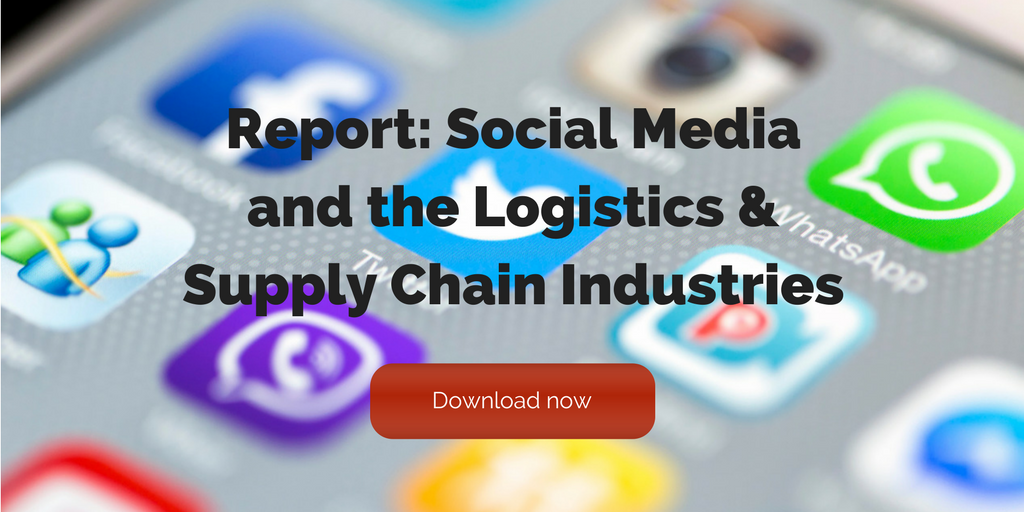
by Fronetics | Jun 7, 2016 | Blog, Marketing, Social Media, Strategy

A cross-departmental social strategy can help facilitate company collaboration.
In your company, social media should be everybody’s business. It is time for your social strategy to include broader collaboration, breaking down your company’s silos. Here is why:
Though marketing departments like to keep tight control over access to social media, doing this can cost you. Such isolation can impact:
- Brand awareness
- The quality and diversity of your content
- Overall customer engagement on social media
- Customer satisfaction and trust
- Insight into industry trends, so you stay ahead of the competition
The truth is, social media is bigger than just the marketing department. It can help gain insight into what customers need, generate sales leads, answer questions, and distribute valuable information to consumers. It impacts many different aspects of your business, so it makes sense to tap into departmental intelligence throughout the company.
Allowing access to the right people, across multiple departments, could actually facilitate the ultimate company collaboration. Your business can realize the full potential of social media use, and your customers get better service.
Tearing Down the Silos
Often a company has several silos in place: sales, customer service, new product development, and marketing are just a few examples. Historically these departments do not work together, and the sharing of information is rare.
But the digital age has changed the way business is conducted. Consumers are not only buying online, they are researching before they buy and asking questions about products or services through social media channels. In fact, one study found that social media is asserting itself as the primary customer communication channel.
Response time is also a factor to consider. One Harvard Business Review report found that the number of customers who expect a response through social media has doubled since 2013, yet seven out of eight messages to companies go unanswered for 72 hours. Why? Because the marketing department often needs to obtain answers from other departments in order to respond.
If you are ready to tear down those company silos, here is how you begin:
- Define goals and identify who will be on your new social media team. Who is knowledgeable, articulate, and can handle social media needs within each department?
- Assign social responsibilities to key individuals throughout your company, perhaps one assigned person per department. This can be effective and make one-on-one customer engagement manageable.
- Clearly define the roles and responsibilities for customer service, public relations, marketing, sales, management, etc.
- Marketing professionals are not typically trained to answer questions or complaints about service or product issues. Since the customer service department may need to handle several questions through social media channels, consider assigning more than one person within this department to provide a timely response.
- Tap into knowledge from all departments to generate ideas, information, and data for informative, fresh content creation.
- Keep your brand voice consistent by crafting guidelines for the style and tone for all social media interactions. Compiling a list of dos and don’ts is always helpful so everyone knows how to respond in difficult situations.
Today’s consumers are on social media and ready to engage. The question is, do you have a cross-departmental team ready to respond quickly and work collaboratively to meet their needs?
Related posts:


by Jennifer Hart Yim | Mar 17, 2016 | Blog, Leadership, Marketing, Social Media, Strategy, Supply Chain

Source: Library of Congress
This is a guest post written by Tania Seary, founder of Procurious. Procurious, the world’s first online social network for supply chain and procurement professionals, has acquired more than 12,000 members in less than two years.
I’m trying to use a baseball analogy here, but appreciate that my headline does have other connotations!
Another analogy might be to say that we’re “getting the flywheel spinning” here at Procurious – the world’s first online network for supply chain and procurement professionals.
Now, for those of you who aren’t familiar with the flywheel analogy, it is a metaphor created by author Jim Collins in his famous business manifesto, “From Good to Great,” to explain one of the key drivers for creating long-term success in business.
A flywheel is a heavy disk on an axle used to smooth a machine’s operation to generate momentum and maintain a constant rotational speed.
It takes much effort and persistence to get the metaphorical flywheel to move, but consistent energy in one direction over time helps build momentum and ultimately leads to a breakthrough. In the case of Procurious, as with Collins’ companies, there has been no specific event, decision, action, or lucky moment that single-handedly helped us to successfully break through the “beta” stage, to where we are today.
Over the last two years, we have remained committed to building something truly special for the procurement profession. Step by step we have stayed focused on our goal of building a very credible and content-rich community for our members.
Now with more than 12,000 members in 135 countries, Procurious has cemented its position as the secret weapon for professionals wanting to be part of the movement toward creating the new face of procurement.
Getting back to our headline analogy with baseball, I wanted to share some of the key decisions we have made along our journey to date to build Procurious.
Agreeing on the MVP
Just to confirm, we are talking about Minimum Viable Product here, not the Most Valuable Player. In the early days of designing this business, everything was up for grabs. Among a long list, we considered building a procurement news aggregator, a pure-play training repository called Procurious TV, and a procurement lifestyle magazine.
What we ended up with was a community platform that included a community feed, member profiles, discussions, eLearning, a worldwide calendar of procurement events, twice-daily blog, and private groups.
The end result was a powerful combination of career advancement, skill development, and professional networking opportunities to help propel today’s procurement professionals forward.
To have open or closed membership?
Once we had agreed on the core features and functionality of Procurious, we had a lot of heated debates over whether we should have an open or closed network. That is, should it be closed exclusively to highly pre-qualified procurement professionals, or open for the whole world to join?
Luckily my team convinced me to keep our network open… and it’s been an important part of our success story to date.
Of course, the major advantage to our members is that on Procurious, they gain access to a wide range of thought leaders and industry experts which then exposes them to diverse opinions on the hot topics in procurement.
Finding our fans
Every club, or community, needs a strong support base. We have been very fortunate to have a number of “early adopters” from around the globe support the building of the Procurious community. And, of course, we now have our “poster child” — Siddarth Sharma — who was surprised to learn he was our 10,000th member. Siddarth is representative of so many of the exciting procurement professionals around the globe — an MBA working for KPMG managing a small team of indirects buyers in India.
Securing our sponsors
Like a baseball club, we needed some big-brand sponsors to keep our operations humming. We have been fortunate to create partnerships with the profession’s leading institutes, associations, analysts, and technology companies. The Hackett Group has supported Procurious from the start, and The Institute for Supply Management (ISM) has joined the team this year. These relationships enrich Procurious in many ways and, most importantly, provide our members with access to world-leading research and resources.
Fielding a winning team
Lisa Malone, Euan Granger, and Jack Slade have been a powerhouse behind building this community, covering all the bases, and getting runs on the board.
Handling the curveballs
The biggest threat to our success is the introduction of a fierce competitor. But we are fortunate that we now have a loyal community that has been built on a substantial foundation of trust and commitment. This will be difficult to shake.
Our next biggest hurdle to success is to overcome the procurement profession’s hesitancy to create social media networks.
Despite the well-publicized benefits, we still meet procurement professionals that tell us “they don’t believe in networking” and don’t accept LinkedIn invitations from people they don’t know. We need to convince the profession of the multiple benefits of using social media, and then provide them with the skills to leverage the opportunity.
One base at a time
Our plan is to continue building Procurious based on our members’ needs, one base at a time.
We will be hosting our Big Ideas conference in London on Thursday, 21 April, for which you can register as a digital delegate on www.bigideassummit.com.
We are also currently beta-testing our new app, which can be downloaded from the Apple App store.
We are asking as many procurement professionals as possible to sign up to the network at www.procurious.com to join this new era and — as we like to say — get involved and get ahead!
Tania is the Founding Chairman of three companies specializing in the development of the procurement profession – The Faculty, The Source and Procurious.
The Faculty is recognized as one of Australia’s leading advisors on procurement development. Established twelve years ago, The Faculty works with leading organizations to transform and elevate the role of procurement, build high performance procurement teams and create professional knowledge networks.
Under Tania’s leadership, The Faculty has instigated a number of “firsts” for the procurement profession in Australia, including the development of a Procurement Executive Program through Melbourne Business School, the establishment of a Procurement Roundtable which includes many of Australia’s leading organizations, creation of an annual Chief Procurement Officer (CPO) Forum and attracting leading global procurement thought leaders to teach in Australia. She also initiated the Corporate Board for Social Procurement, which has created a foundation for leading corporations to dedicate appropriate areas of spend toward social enterprises.
Four years ago, Tania founded The Source, a specialist recruitment firm for the procurement profession. In 2013 she moved to London and founded Procurious, the world’s first online community for procurement professionals to connect, share and learn.
Tania’s fascination and commitment to procurement development started around fifteen years ago in the United States. After finishing her MBA at Pennsylvania State University, Tania became one of Alcoa’s first global commodity managers.
Prior to moving to the USA, Tania’s career was focused on marketing roles within Alcoa and Rowland in Australia, and the Walt Disney Company in the UK. Tania has an MBA and a Bachelor of Business.

by Fronetics | Mar 8, 2016 | Blog, Marketing, Social Media, Strategy

Social prospecting helps you identify potential customers outside your established audience using social platforms.
Social media should be an integral part of your marketing strategy — we know it helps build brand reputation, gather market intelligence, discover customer problems, and influence purchasing decisions. But your lead generation efforts should also include the use of social platforms. It’s a practice called social prospecting that can be highly effective in identifying new prospects.
You’ll use your existing social handles to identify and pursue potential customers that may be interested in your business but that don’t yet know about it. HubSpot describes social prospecting: “It’s about scouring the social web, identifying potential prospects, and engaging them through content to get them to your site and move them through your funnel.”
Why does it work?
Think about the size of your established audience. Now think about the total number of active users on social media: As of the fourth quarter of 2015, Facebook had 1.59 billion active monthly users, Twitter averaged at 305 million, LinkedIn had 414 million, Google+ had 111 million, and Pinterest had more than 100 million. Those enormous numbers equal enormous potential for your business.
That’s because social media isn’t just for recreational purposes anymore. More than half (53%) of B2B buyers report using social media to research purchases, in fact. Social prospecting allows you to be proactive in finding all of the considerable number of social-media-using prospects who are looking for you, too.
How do you get started?
If you already have a social media presence, that’s step one. It gets a little more complicated from there.
Fronetics has developed a free social prospecting workbook to learn how to use social listening to generate new leads for your business. We’ve identified the quickest way to find potential customers on Twitter, Facebook, LinkedIn, Pinterest, and Google+. Every worksheet includes:
- Short preparatory work to make the actual prospecting easy
- Visual instructions on how and where to find prospects
- Pro tips that will help you get the best results
- Prescriptions (Marketing Rx) for success
- Take-home exercises for follow-up prospecting

Happy prospecting!
Related articles:
by Fronetics | Nov 10, 2015 | Uncategorized

When it comes to social media and the supply chain, popularity isn’t everything.
With more than 1.3 billion users, Facebook is the most popular social network. Your B2B business should not use Facebook just because of its popularity. Rather, your business should use Facebook (or not) because it fits into your marketing and business strategies.
There are a lot of social networks out there – and the number is growing every day (hello, Ello). Not only is it impossible for your business to be present on every social network, it is also not a good use of time and resources. Instead, you need to identify which social networks (or even which social network) is right for your business. What makes a social network “right?” The right social network is one through which you can create value by communicating with your current and prospective customers.
Leverage New Age Media put together an infographic which offers a great overview of six popular social networks.

Reviewing this infographic is a great starting point for determining where your business should be involved. However, you need to take the next step and, as mentioned earlier, determine which social network(s) best fit your business.
A recent survey of individuals within the logistics and supply chain industries asked which social networks their company uses. The top networks identified by respondents were: Twitter (94%), LinkedIn (86%), and Facebook (77%). Given that these three social networks are used the most, one would expect them to also have the great business impact. Surprisingly, this is not the case. 94% of respondents reported Twitter to be very impactful, 86% reported LinkedIn to be very impactful, while just 15% reported Facebook to be very impactful.
When participating in social media, be smart. Choose social networks that create value for your company. If you start using one and find it isn’t working for you, alter your strategy, or stop using that social network.
This article originally appeared on Electronics Purchasing Strategies.
You may also like:

by Fronetics | Oct 7, 2015 | Blog, Marketing, Social Media, Strategy

I wrote previously about the opportunities companies within the logistics and supply chain industries can realize through social listening. I cautioned that to reap the benefits and seize the opportunities afforded by social media, companies need to use the information and intelligence gathered.
Using the information and intelligence gathered is essential. There is; however, another critical element: engagement. Engagement is a differentiator. Without engagement you are a lurker. You don’t want to be a lurker.
What is a lurker?
A lurker is someone who observes, but does not participate. If your company does not engage via established social media accounts, your company is lurking. Stop lurking. To realize the benefits of social media and social listening you need to actively engage with customers and others via social media.
What is active engagement?
How can your company actively engage with customers and other via social media? Here are some ideas:
- Ask questions
- Answer questions
- Provide clarification
- Weigh in on a discussion/topic
- Thank followers for their ideas, suggestions, and feedback
- Highlight when/how you have used customer feedback to make changes to a product or service
- Simply let people know you are listening to their comments and feedback.
Action
The information and intelligence your company can gather via social listening is immense. If you do not use what you have gathered you miss out on opportunities and revenue. The same can be said about social lurking. By not actively engaging via social media your company misses out on opportunities.
Social media can be a strategic tool – if used correctly.
This was originally published on Electronics Purchasing Strategies.










